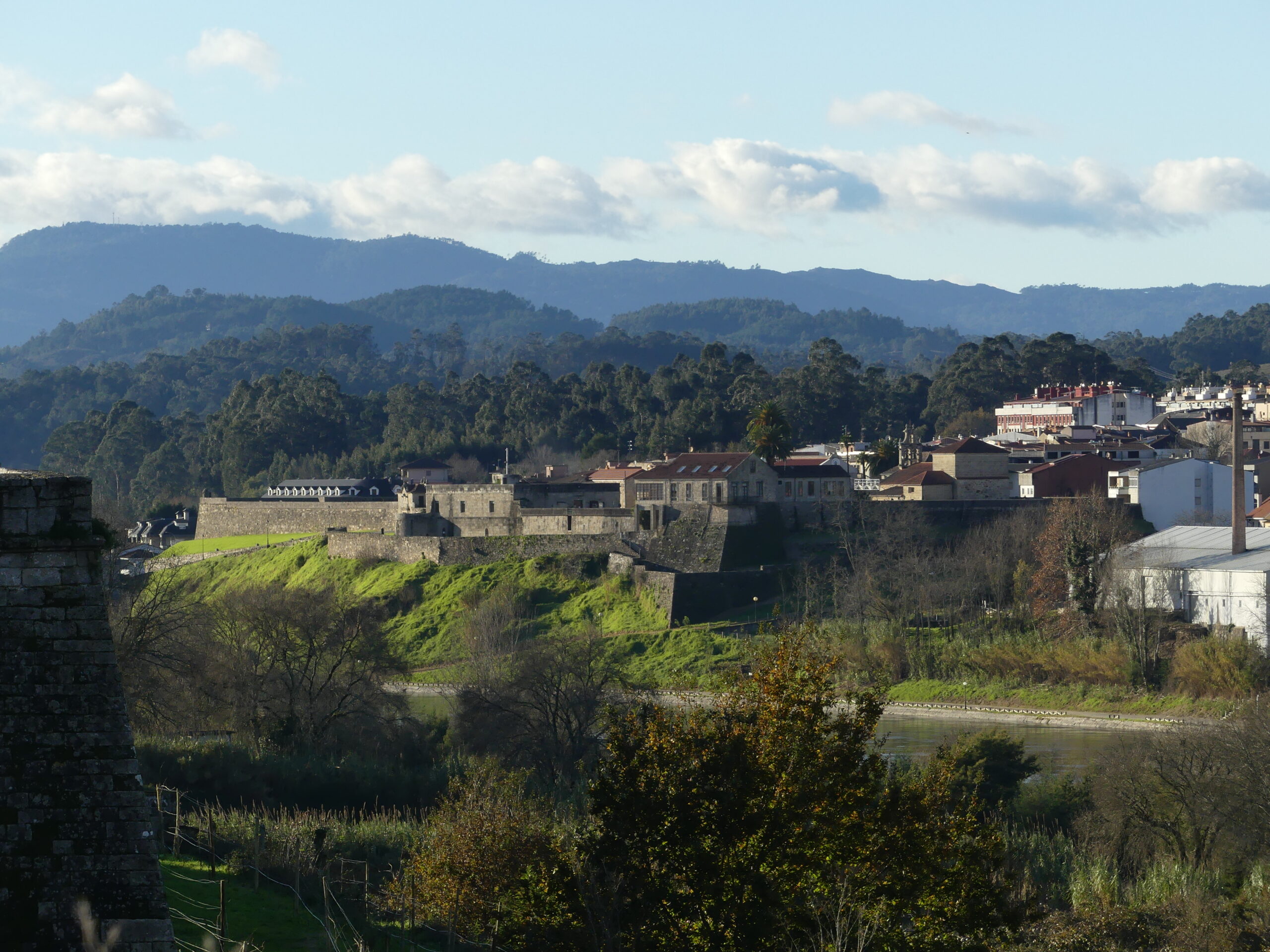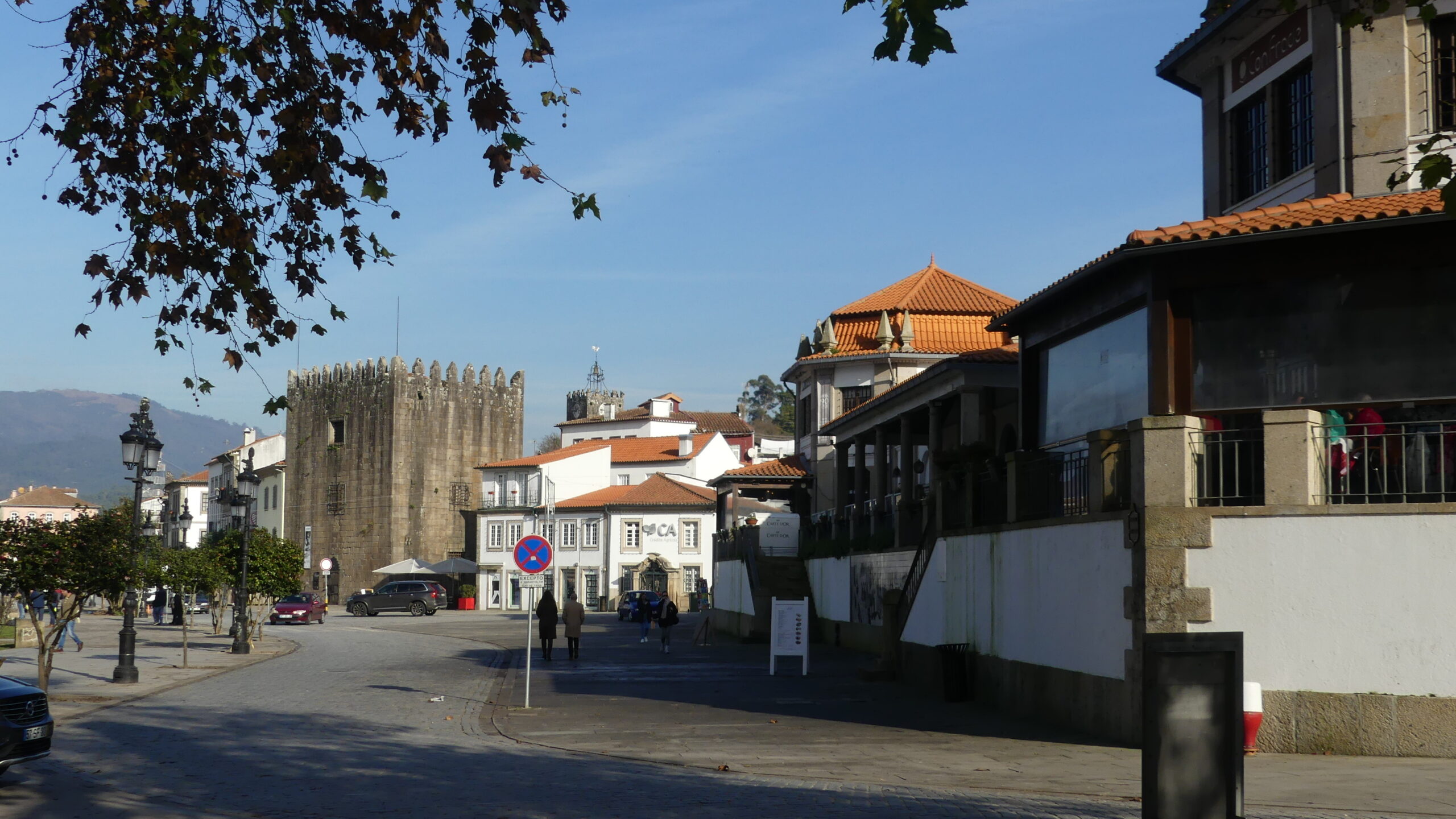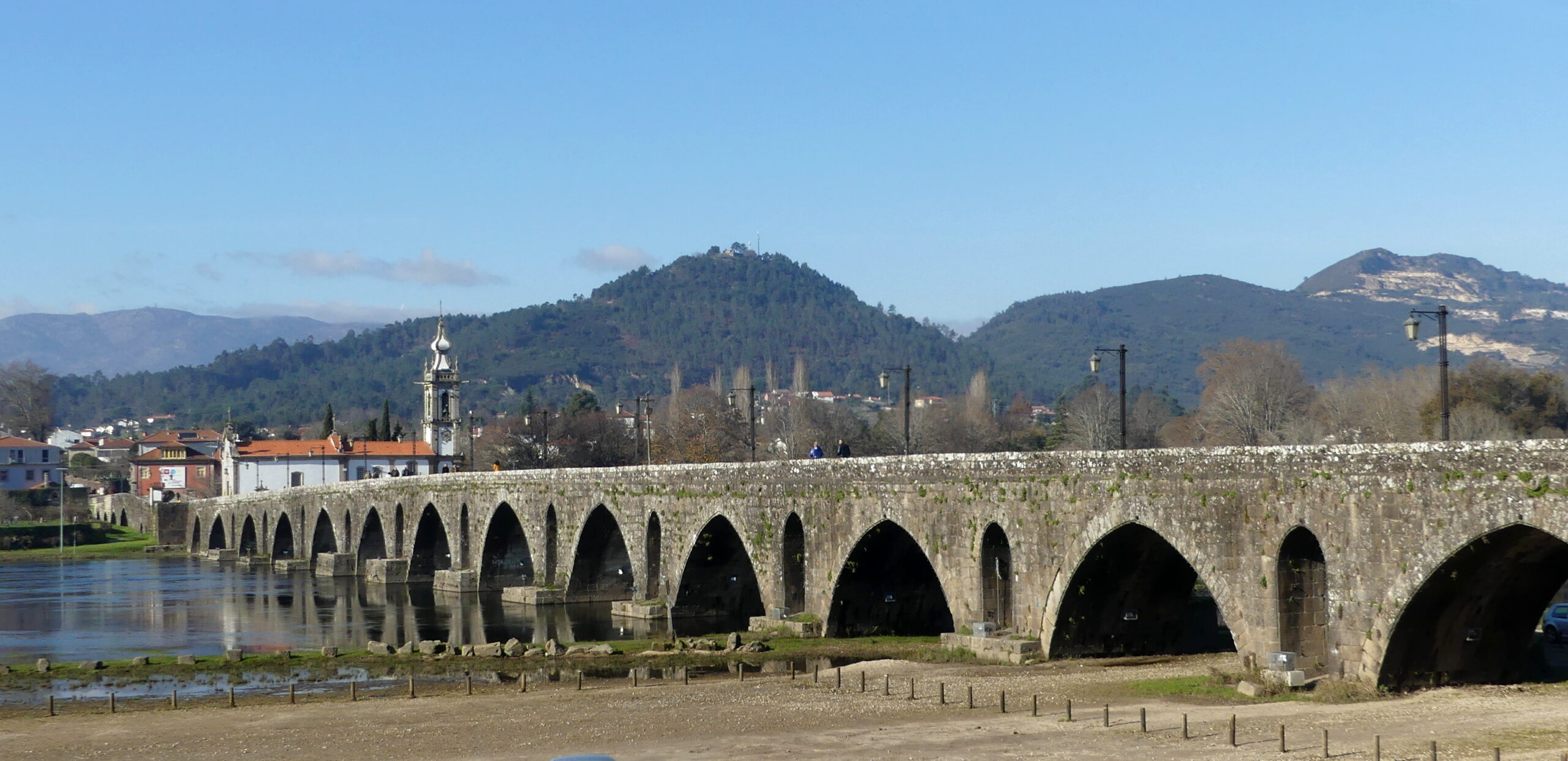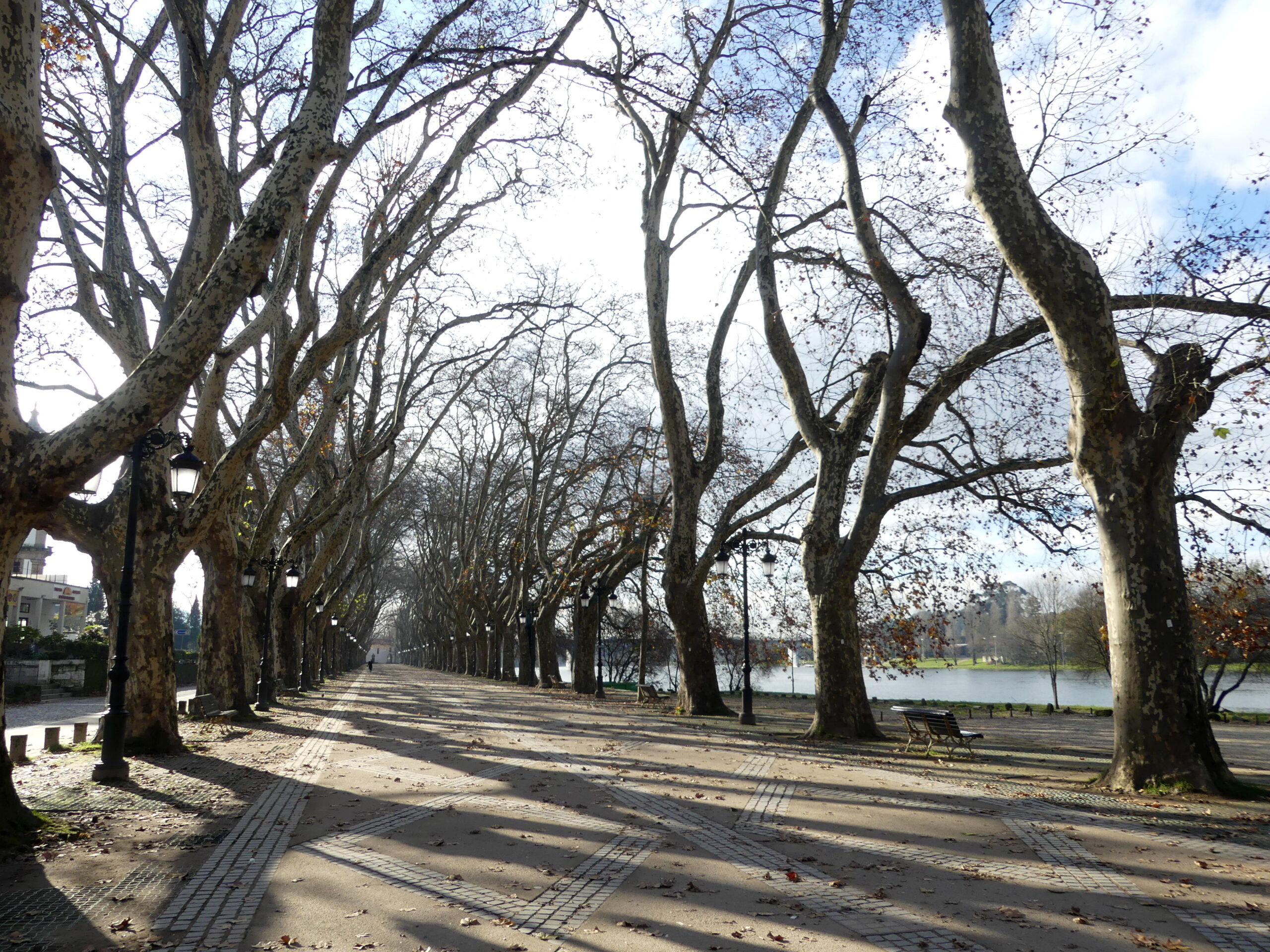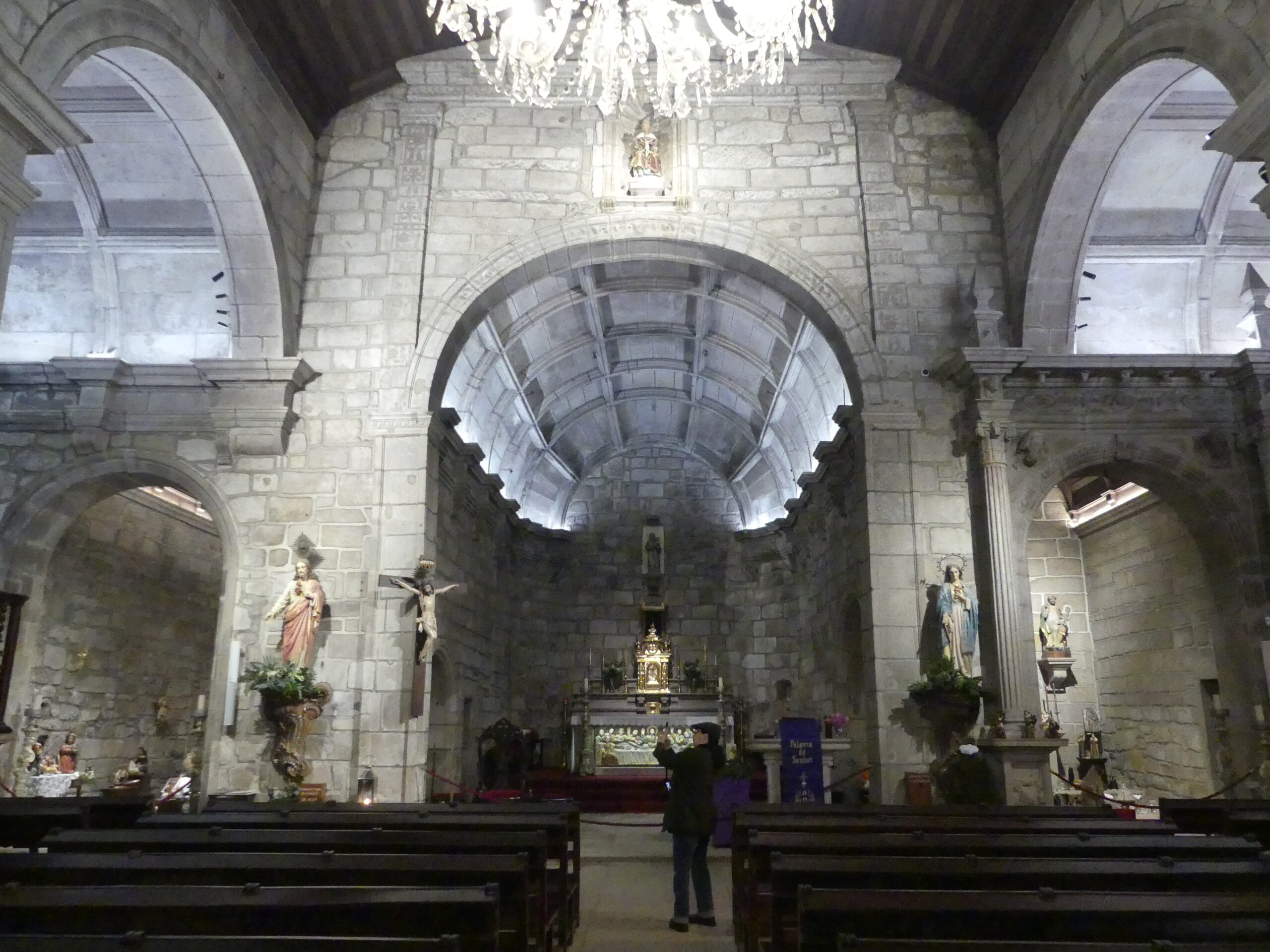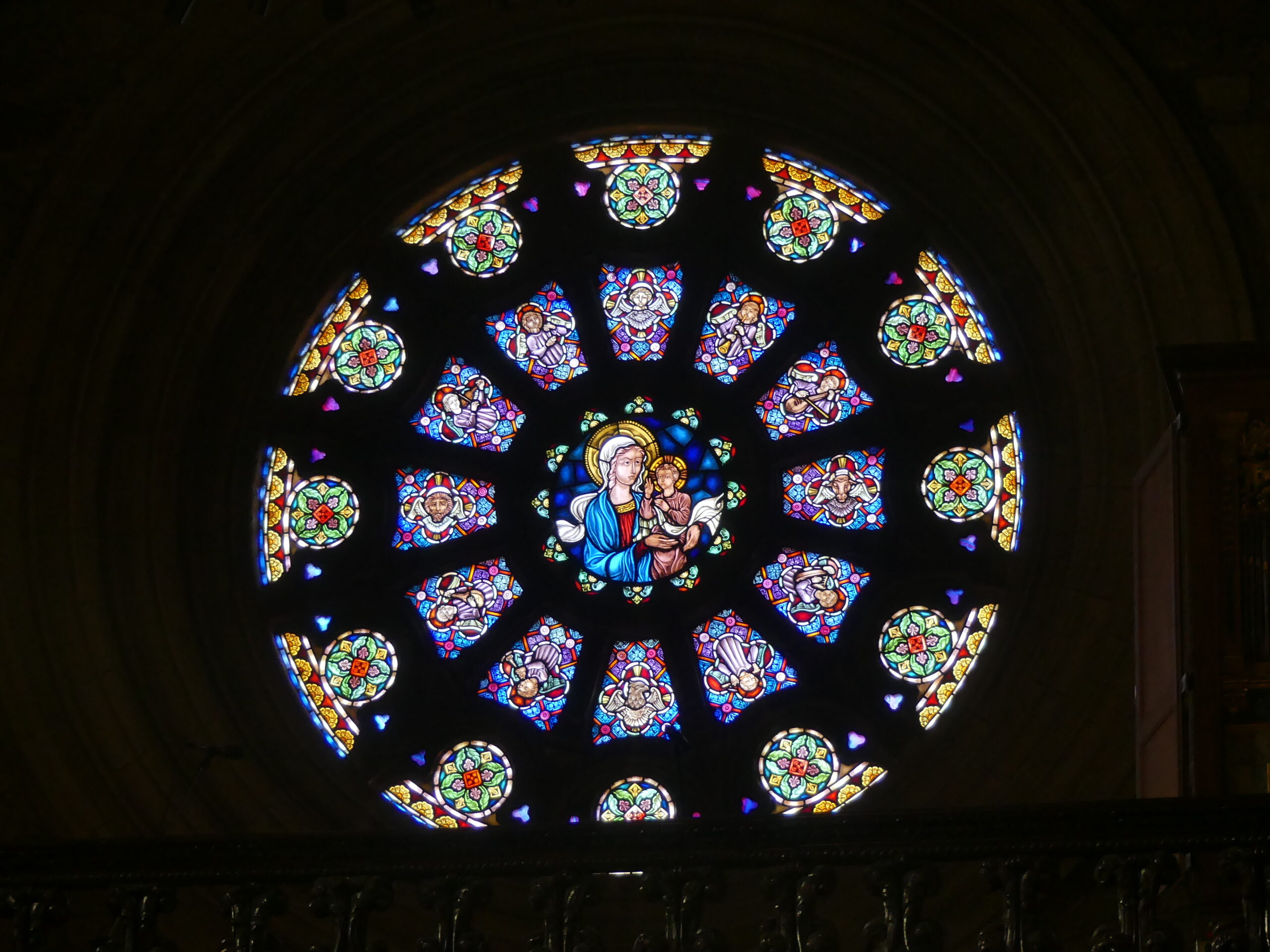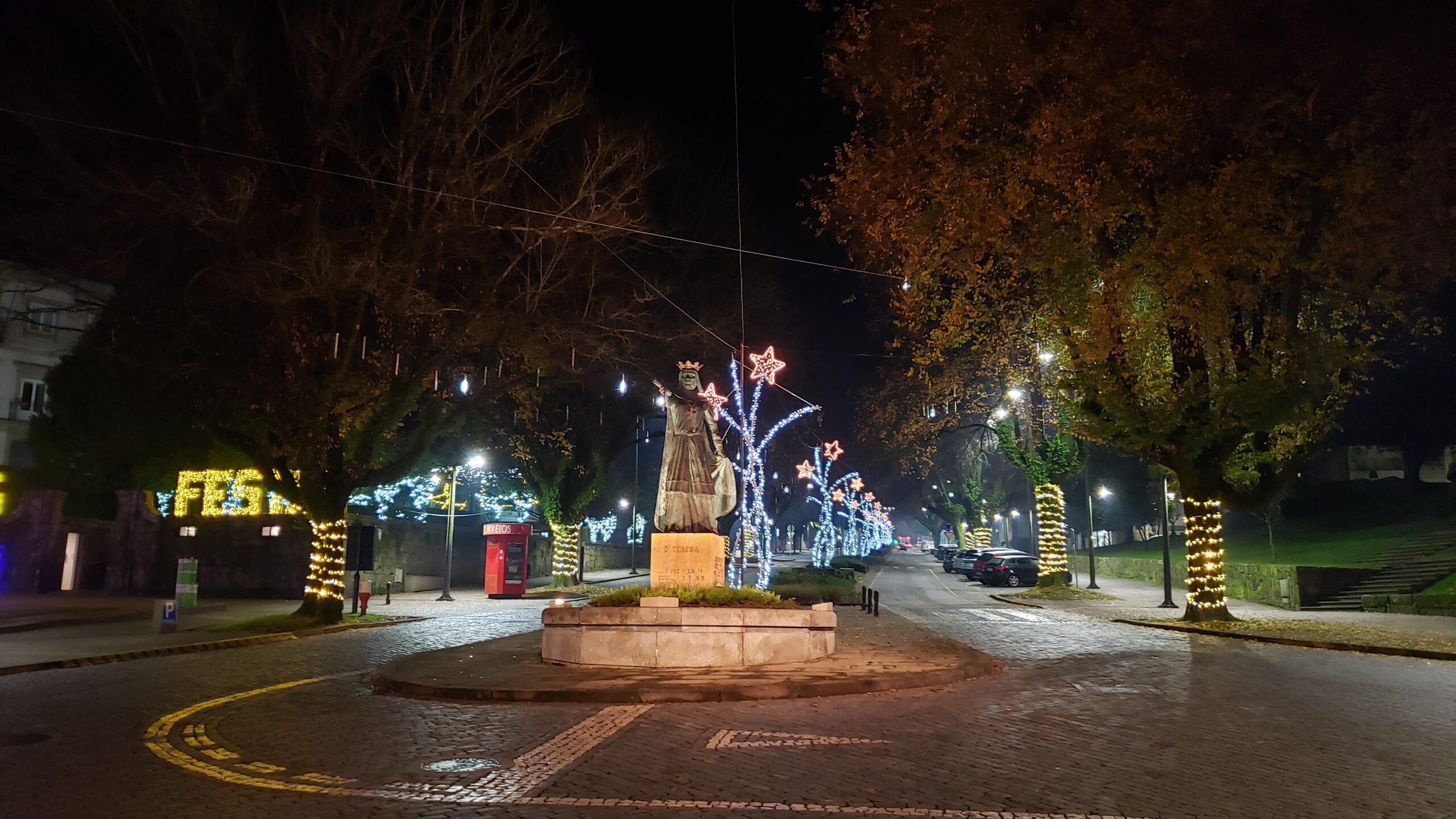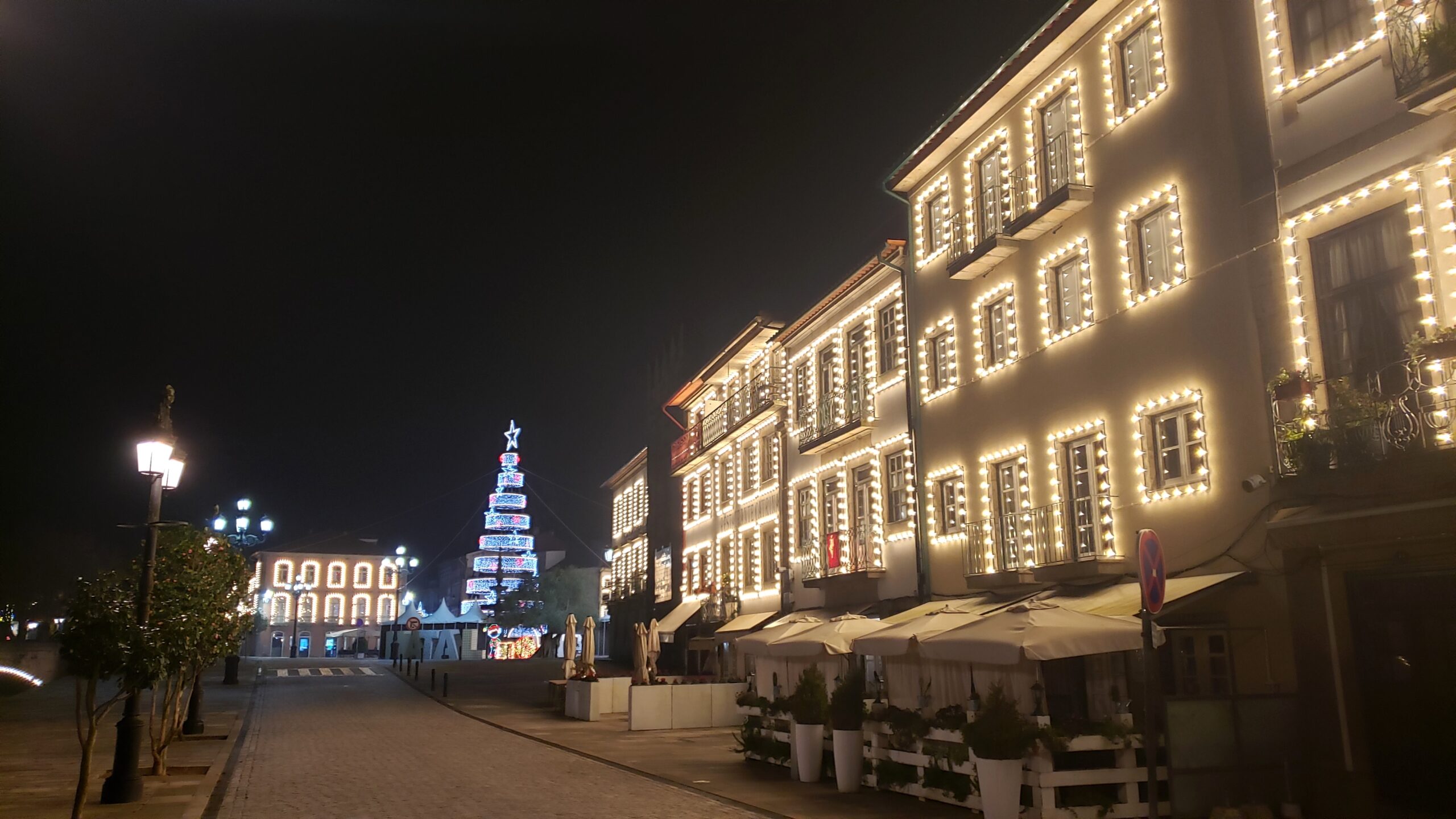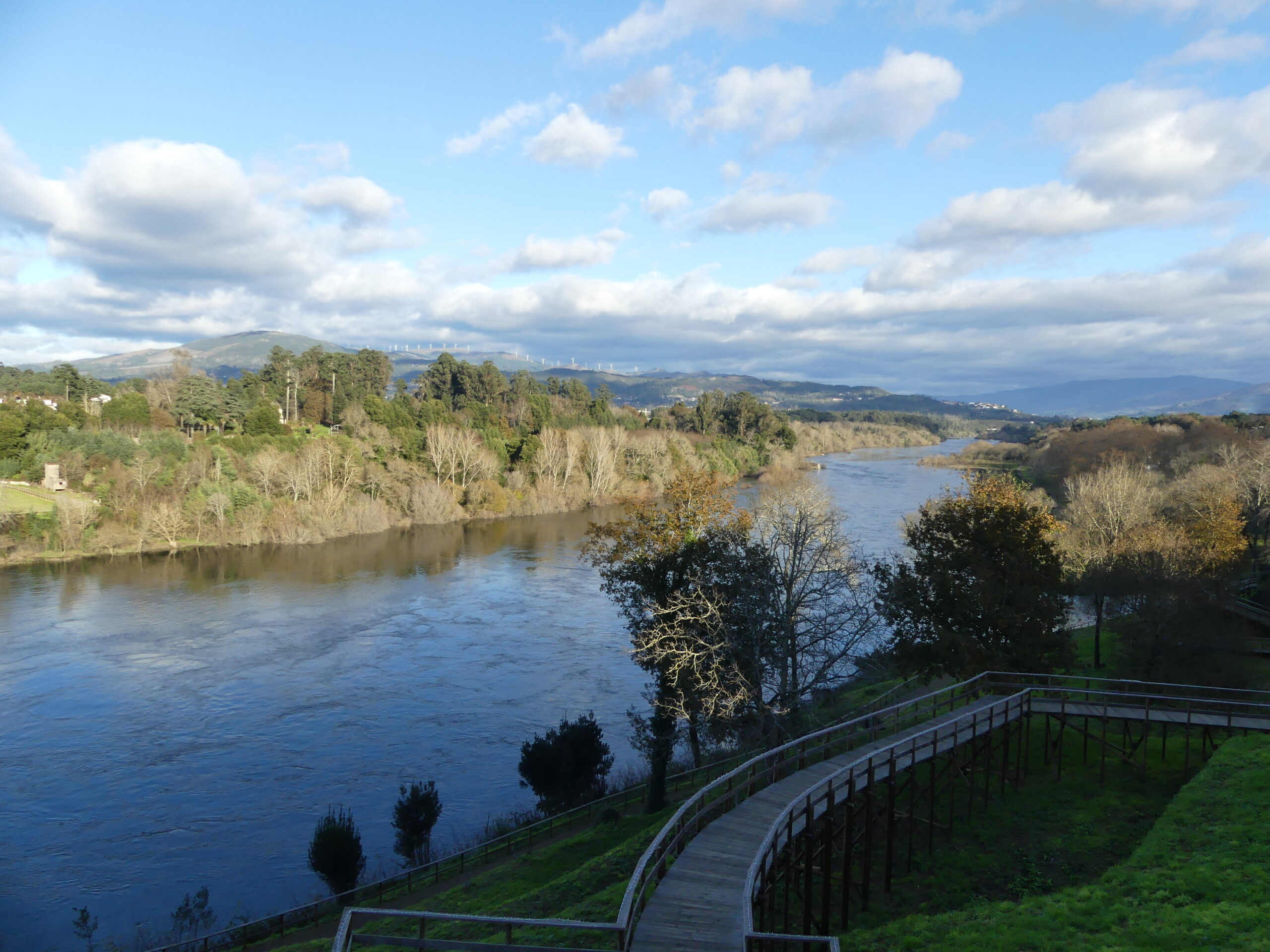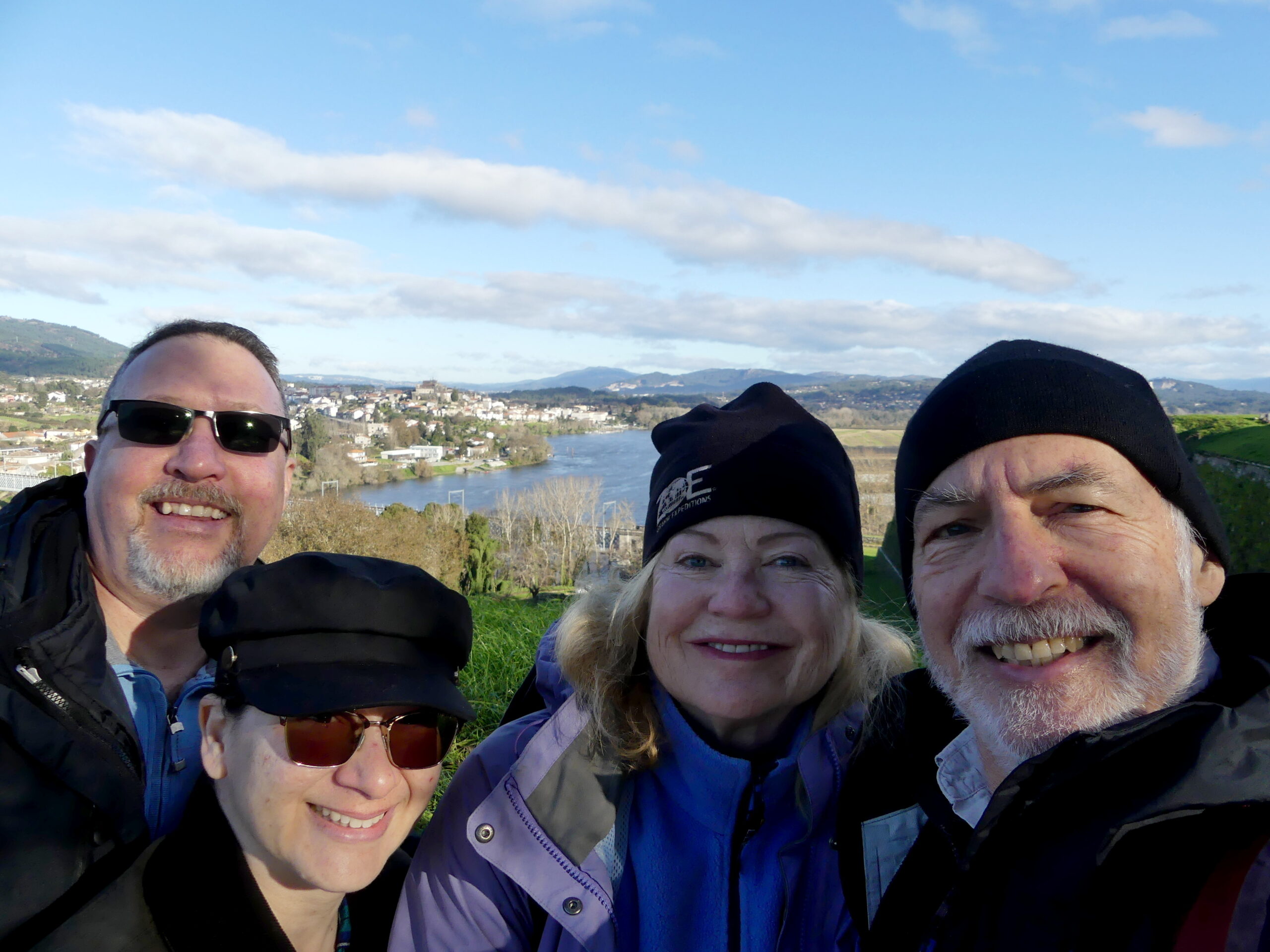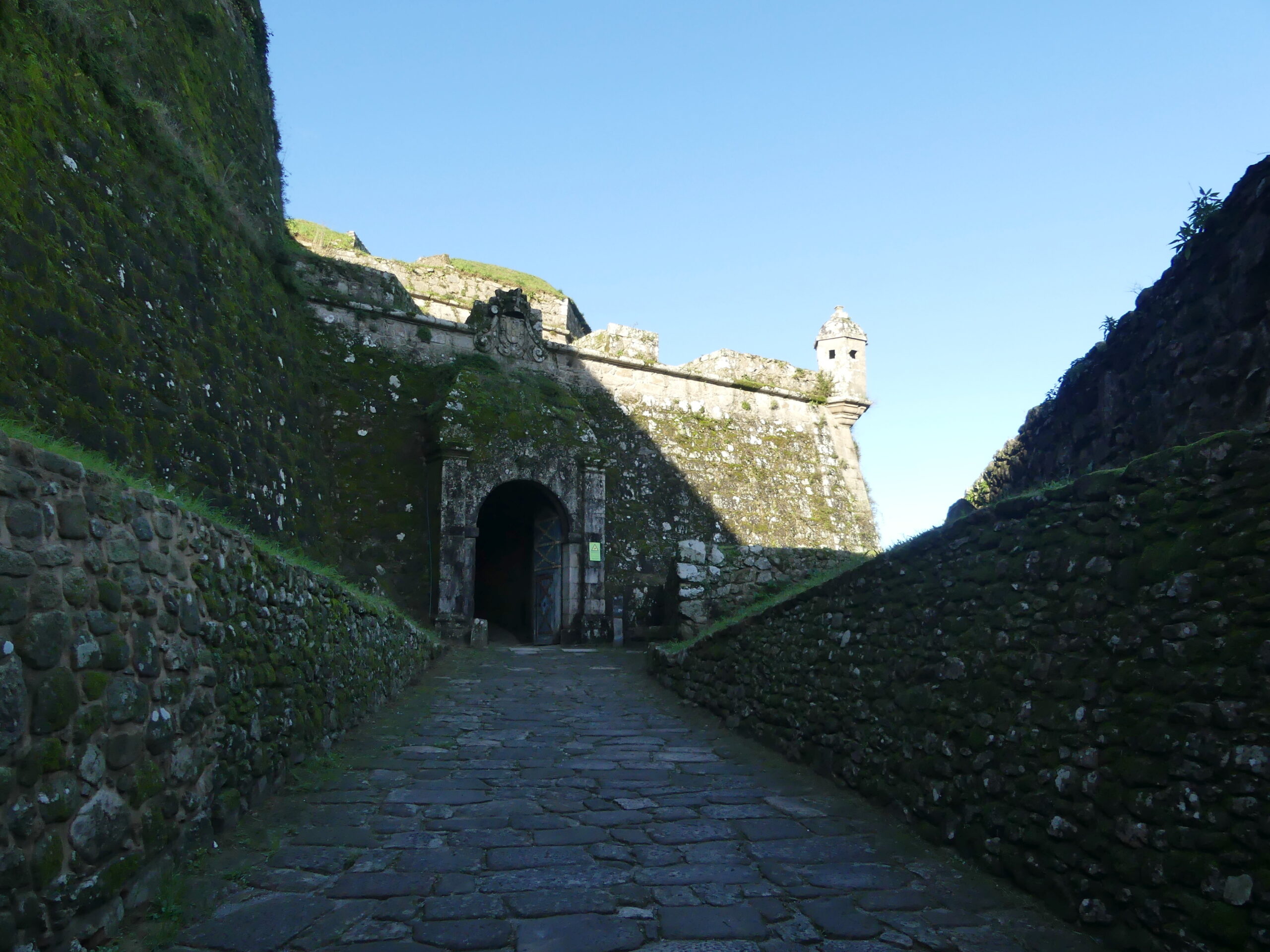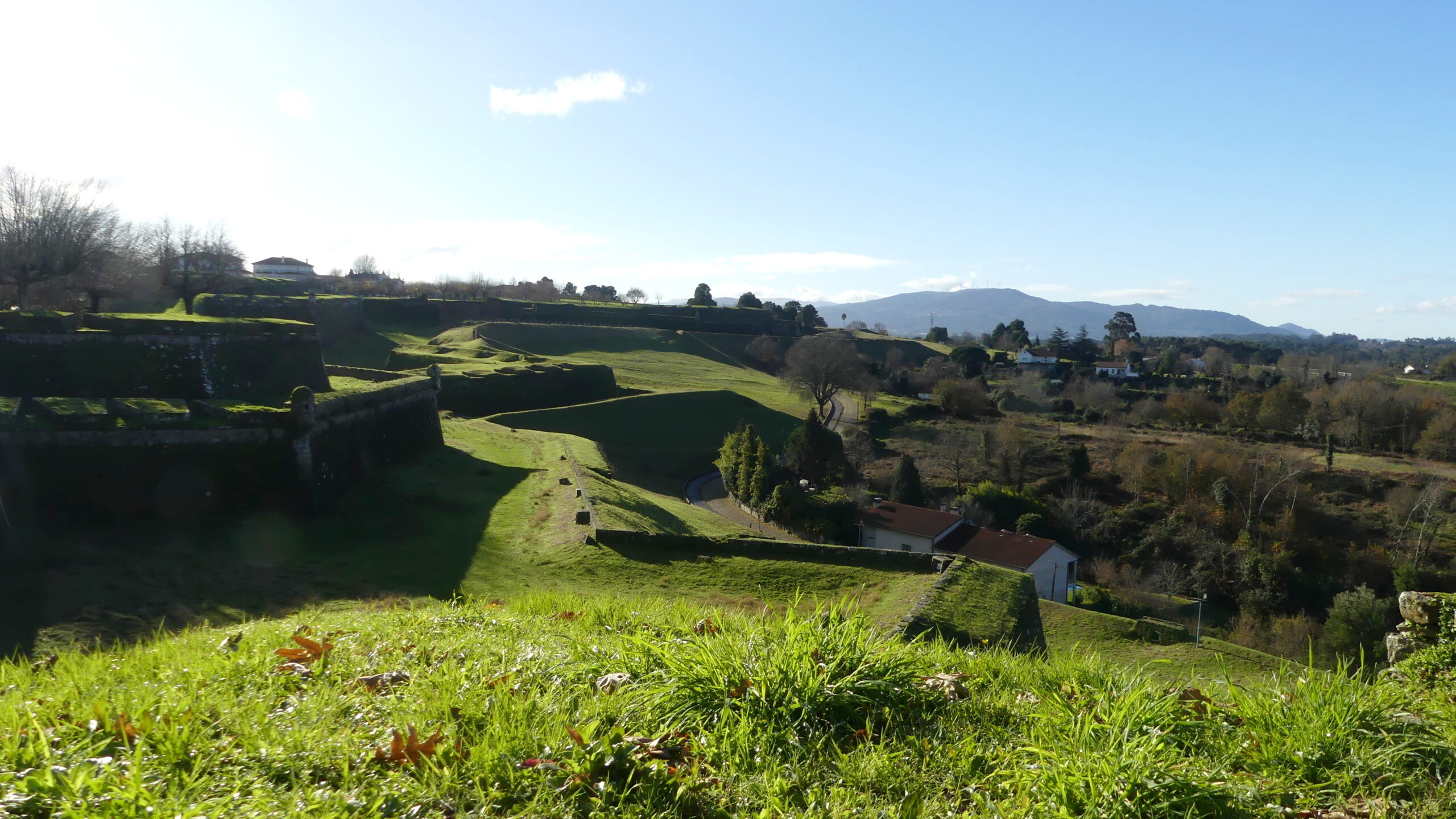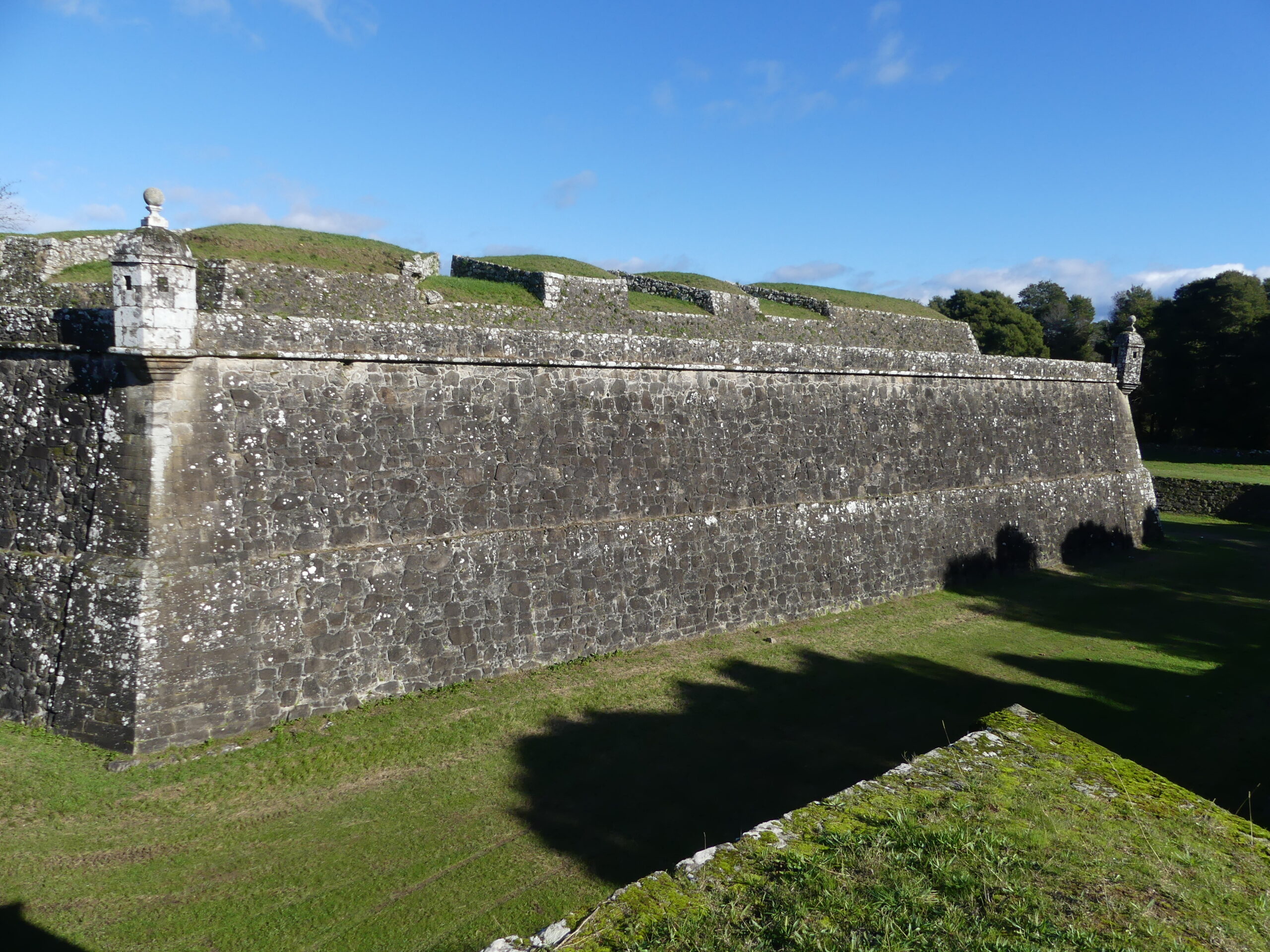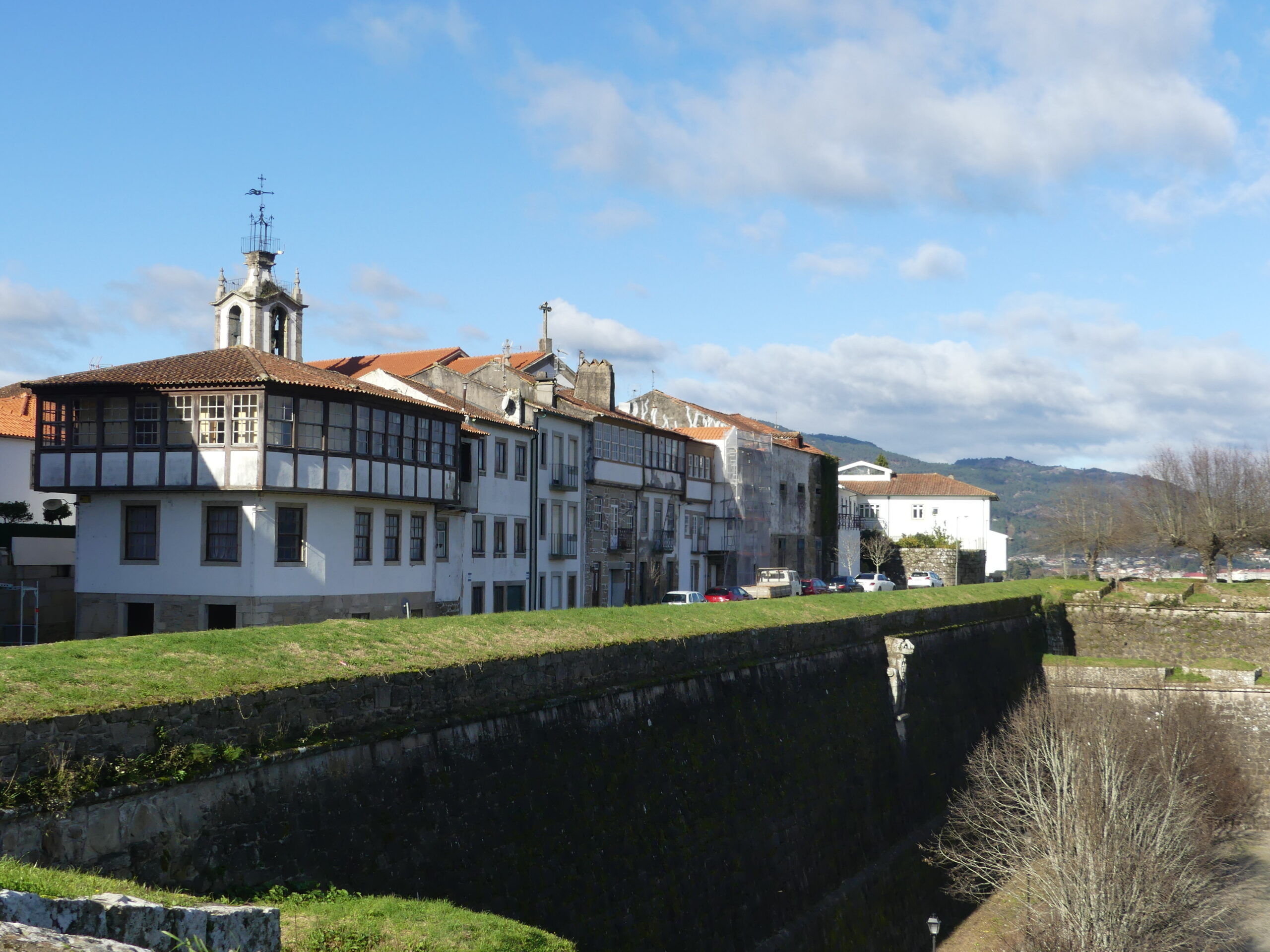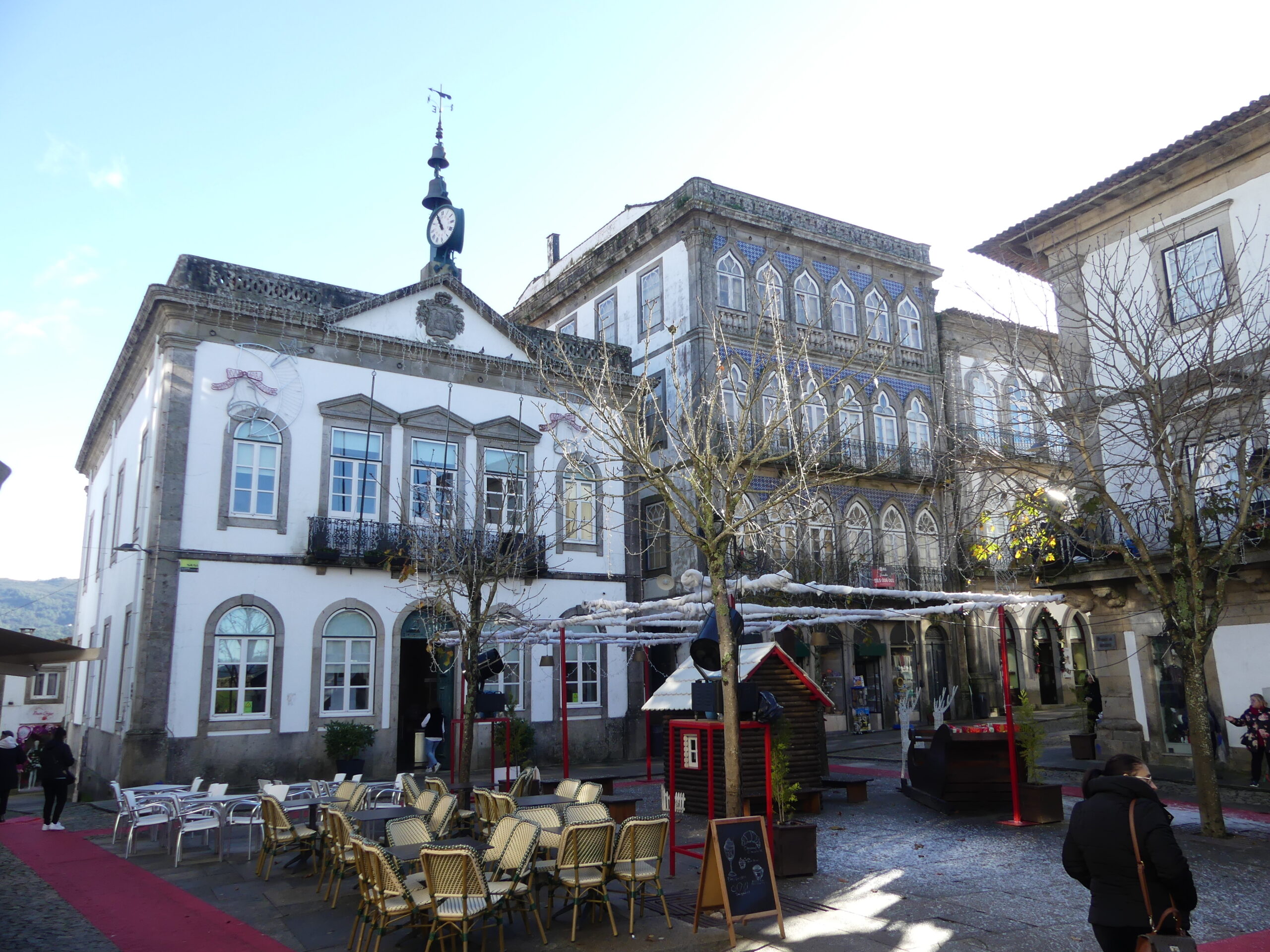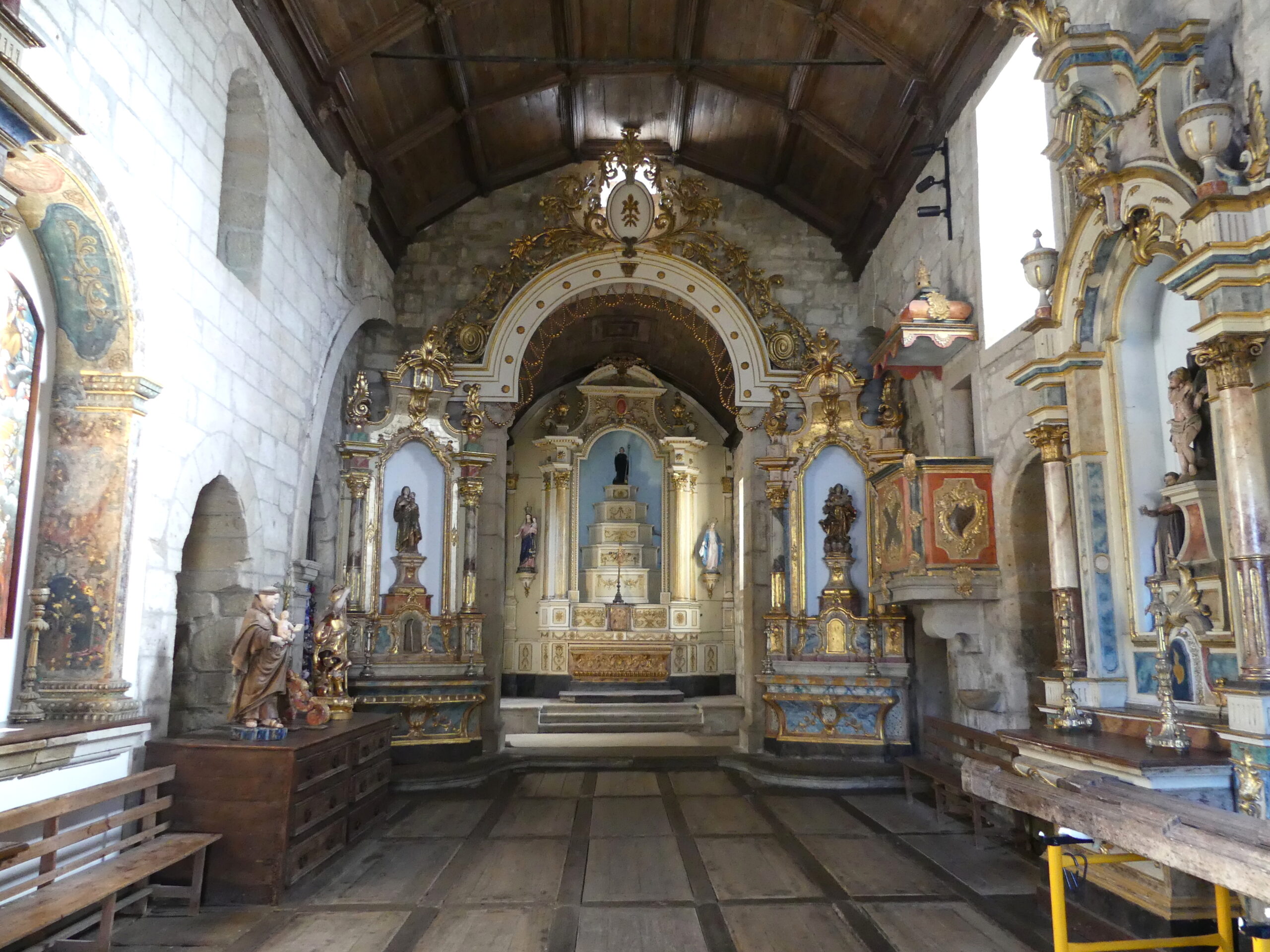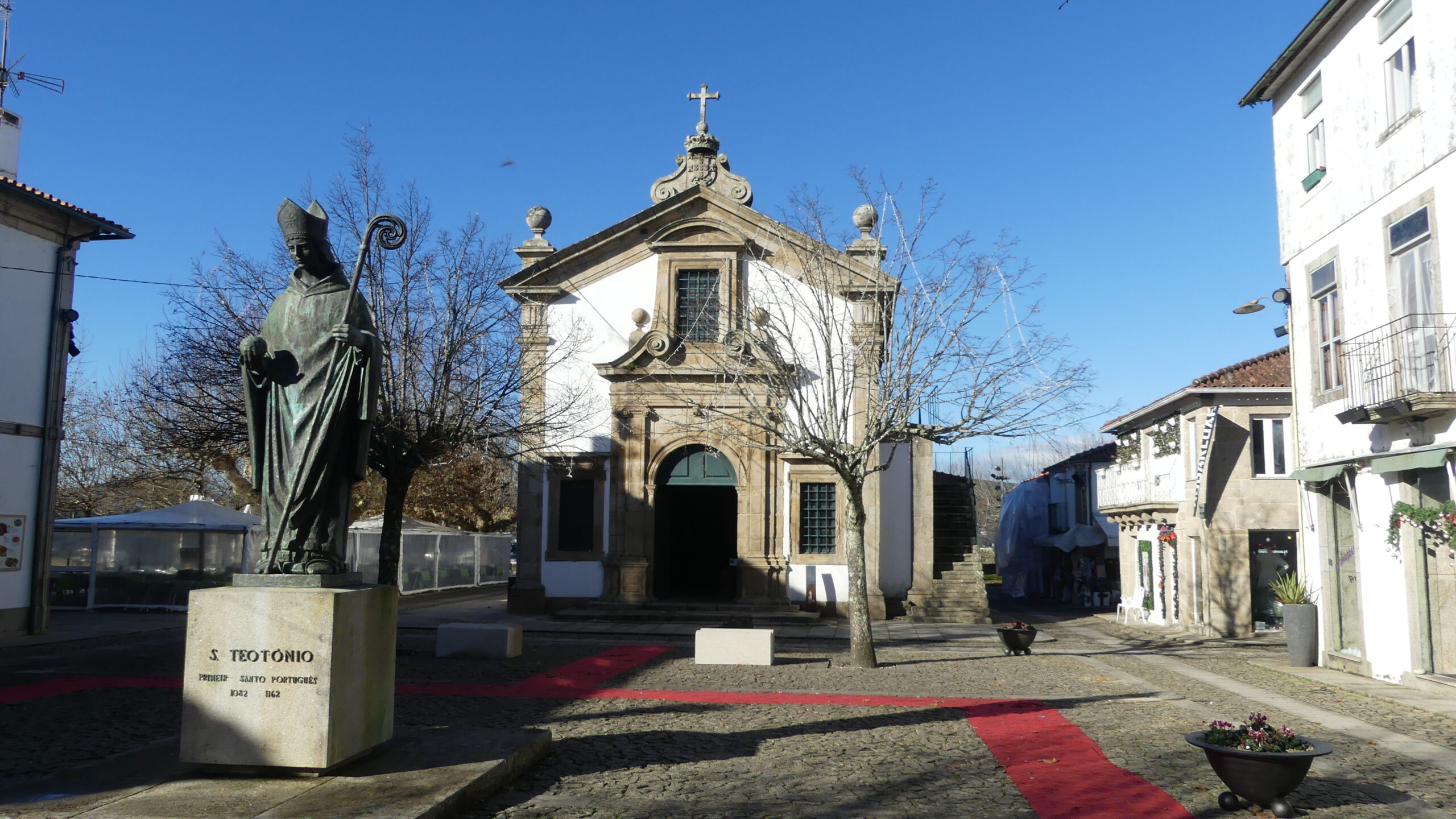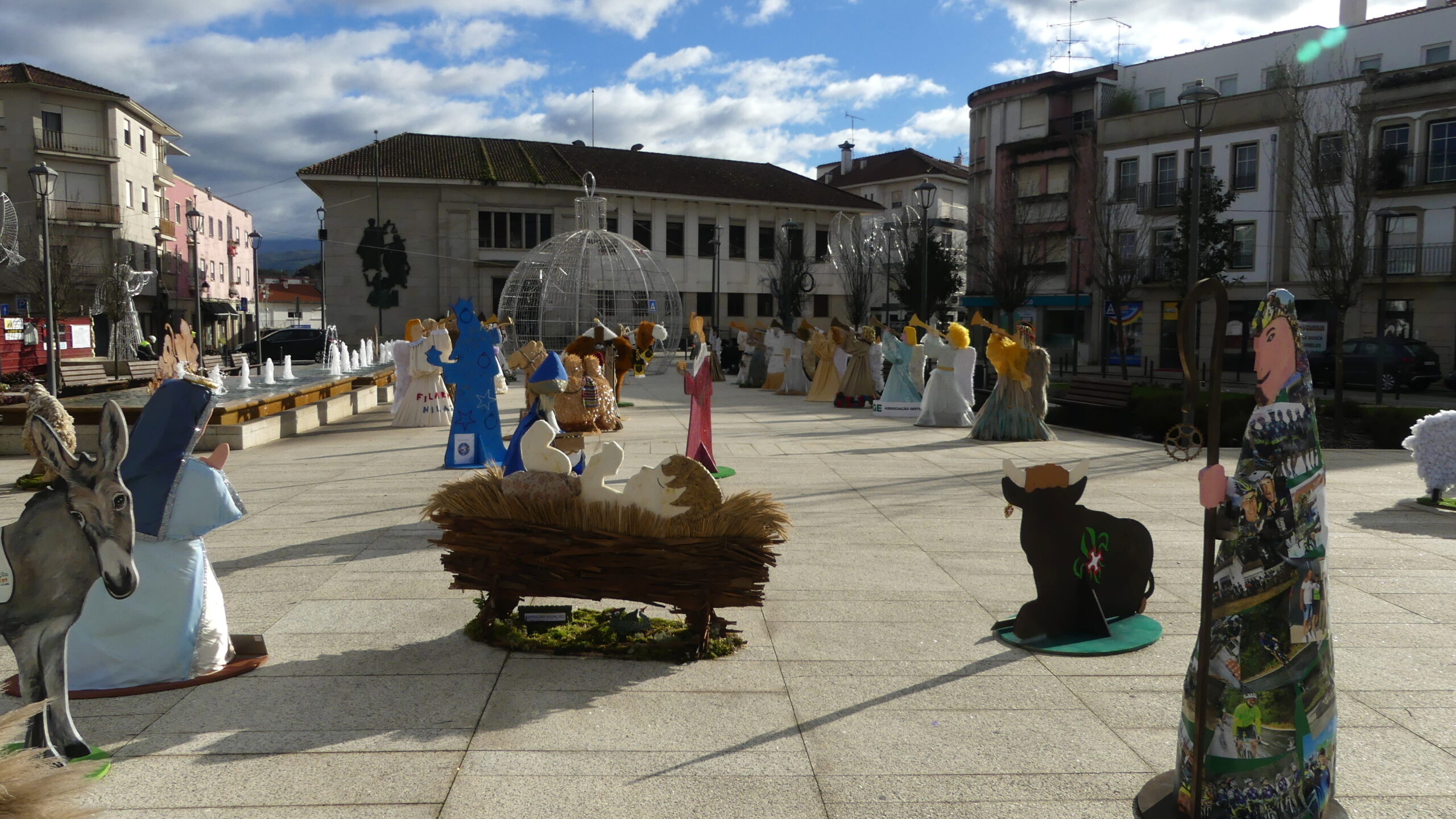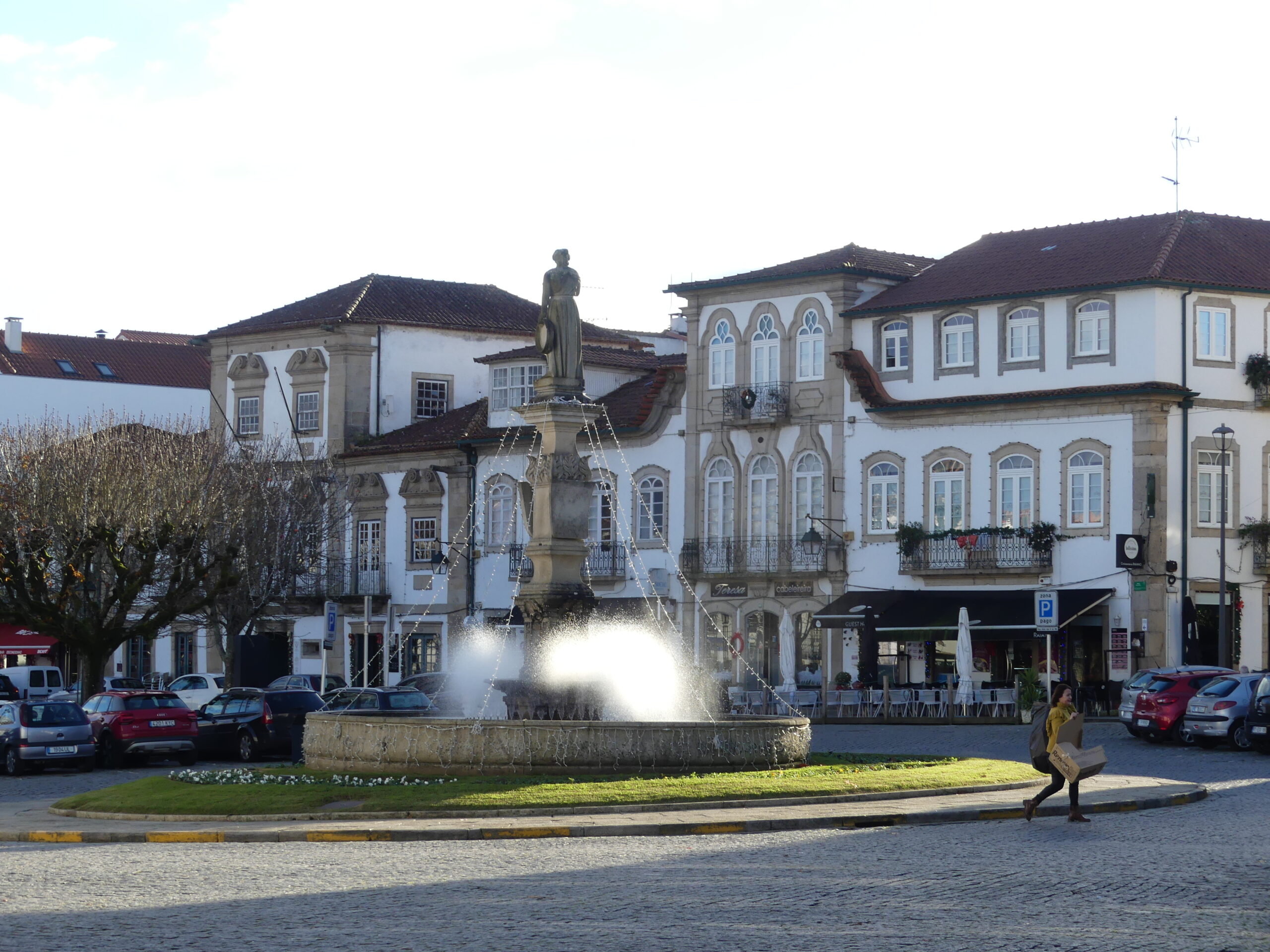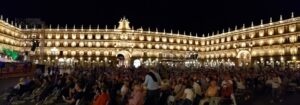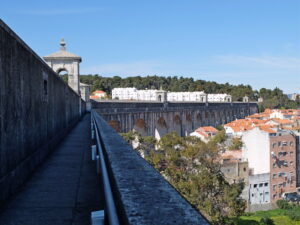We traveled by bus to the north of Portugal at the edge of the border with Spain, a hilly region called Minho. Minho is well known for its special “green” wine, the Vinho Verde, as well as its dairy products. Three of its most interesting towns were fortified from the Middle Ages on to confront the Spanish and French, but then and now welcomed pilgrims on the trail to Santiago do Compostela.
Ponte de Lima
We stayed in the countryside close to the town of Ponte de Lima, named for its old Roman/medieval stone bridge and the Lima River running through it. It’s a lovely town with three massy towers defining the town walls that used to keep people out centuries ago.
Main street of the old town along the Lima River with one of the stone towers included in the former defensive wall facing the river.
The bridge at Ponte de Lima. The near part is Roman and the farther part is medieval. Pilgrims have long crossed it on the way to Santiago in Spain, stopping at the elegant 18th century church mid-way across and sleeping at hostels on the far bank.
Splendid plane tree (sycamore) allée along the river.
Apse of the 15th century church Igreja Matriz under charter from Dom João I. The church contains some elegant woodwork and an elaborately baroque chapel, but we loved this simple barrel vault and stone setting.
Modern rose window in the 15th century church of Igreja Matriz in Ponte de Lima.
The main boulevard away from town was brilliantly decorated for the holidays.
Riverfront of Ponte de Lima at night
Valença
The border with Spain, the Minho River, peacefully joins two member states of the European Union. The Portuguese forts at Valença and Monçao once confronted the powerful kingdom of 17th century Spain. Now they are historical curiosities, their moats greenspaces. And the once militarized walled towns charm tourists from everywhere.
In any season pilgrims still journey through the picturesque, hilly countryside to admire the towns and pray at the religious sites, then cross the Minho to reach Santiago de Compostela.
Four visitors to Valença enjoy the moment after peering across the Minho River toward now friendly Spain.
The fort at Valença is a superb example of 17th century military technology, comprised of a complex array of star-shaped ramparts and defensive structures all enclosing the old town within, a lattice of narrow streets and old buildings. Valença was apparently quite successful repelling Spanish and French invaders from the 13th century on. After we climbed up to its northernmost walls, we entered a long, dark stone passage by this gate. In the tiny turret a sentry would have been watching Spain carefully.
Green vegetation has softened the cascade of defensive walls at the norther end of Valença.
The richly green moat and defensive ramparts at the southern end of Valença.
These residential buildings adorn the eastern ramparts of Valença.
The central plaza of Valença, Republica, tucked within the nearby fortress walls. The red “carpet” at the bottom left is a painted welcome to pilgrims passing through toward Santiago. The carpet continues along the lengthy north-south axis of the town, which is still divided into two parts by a thick stone guard station and moat. These once defended the southern part in case the northern section was breached.
Two Romanesque churches still greet pilgrims on the trail to Santiago at the northern end of Valença. This colorful interior of Santa Maria of the Angels, featuring a triumphal arch and a layer cake of an altar, dates from the 18th century.
Another important stop for pilgrims is this small church honoring Sao Teotónio in a plaza with his statue. He was the first saint beatified from the new Christian land of Portugal after the defeat of the Islamic rulers in the 12th century.
Monçao
These Spanish fortifications opposed Monçao across the Minho River. Peaceful vineyards occupy the valley today. Monçao’s fortifications once rivalled those of neighboring Valença, but much of the old structure has disappeared. It was much easier to imagine how they looked after experiencing the impressive strength of Valença.
A different sort of presepio, or manger scene, at a broad plaza in Monçao.
Many small towns of this area offer inviting plazas centered on Renaissance or Baroque fountains, such as this one in Monçao with its mist glowing in the wintry light.
Another view of Spain across the Minho River at Monçao. Now many bridges connect the two countries, including pedestrian ones for the pilgrims to Santiago.
(To enlarge any picture above, click on it. Also, for more pictures from Portugal, CLICK HERE to view the slideshow at the end of the itinerary page.)


